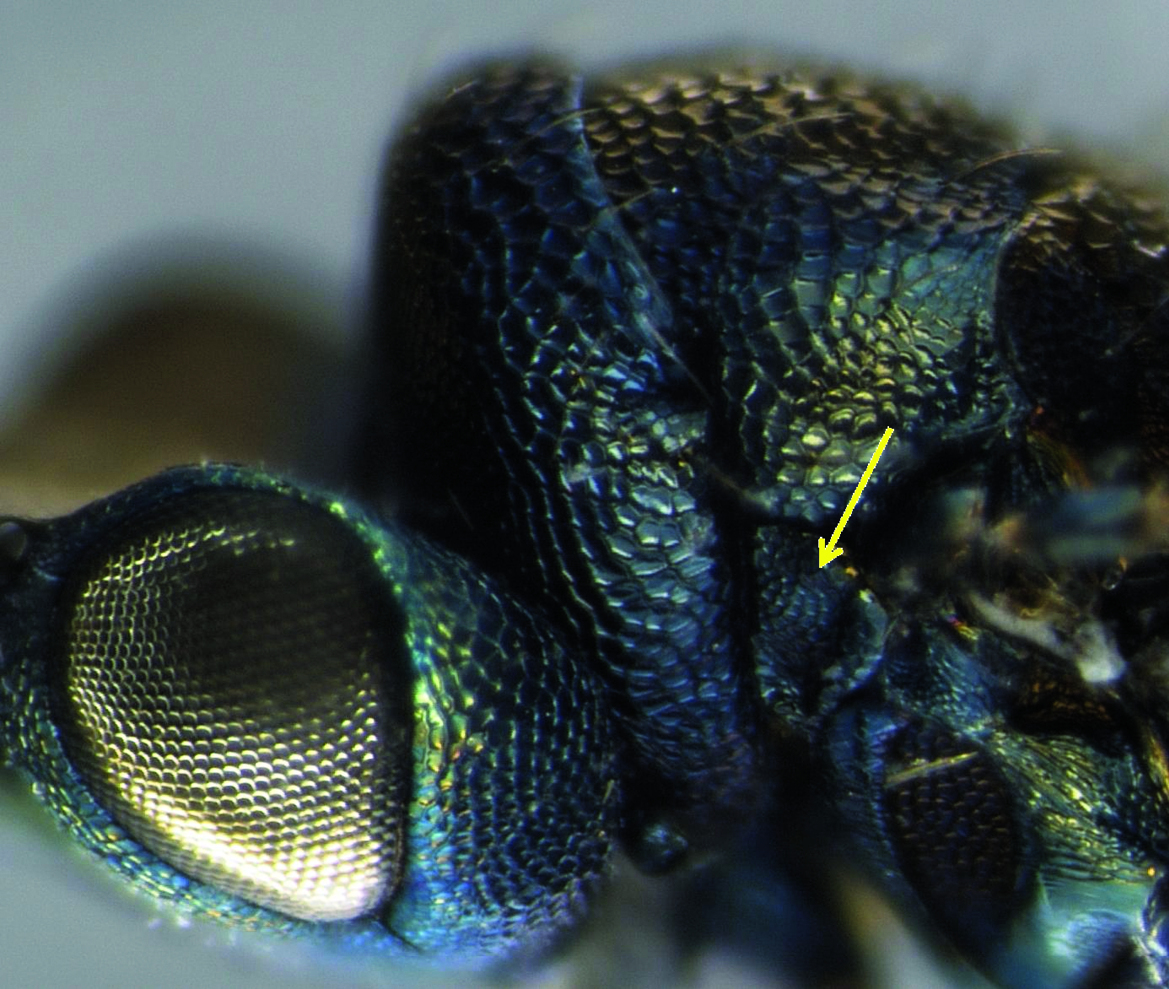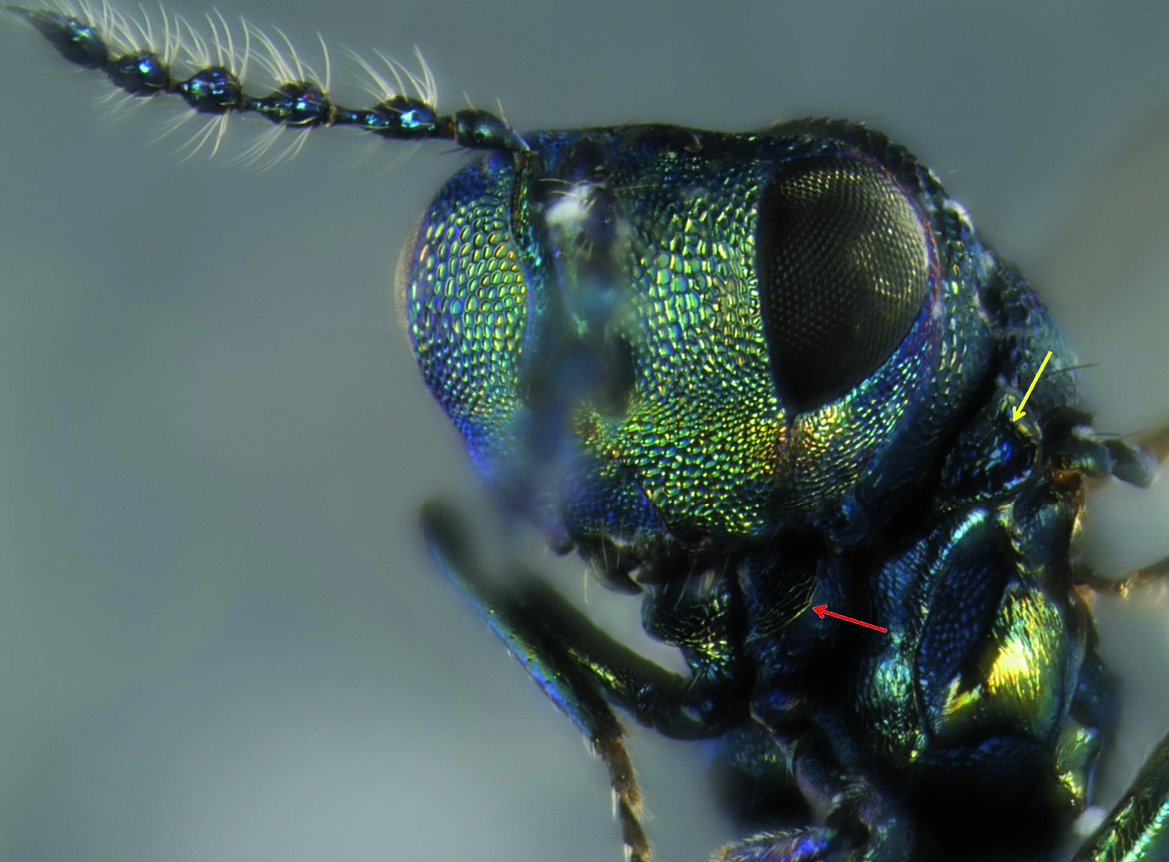






(C) 2011 Tiago G. Pikart. This is an open access article distributed under the terms of the Creative Commons Attribution License, which permits unrestricted use, distribution, and reproduction in any medium, provided the original author and source are credited.
For reference, use of the paginated PDF or printed version of this article is recommended.
Bruchines damage agricultural crops and trees, reducing the quantity and quality of the seeds. The aim of this study is to record, for the first time, Paracrias pluteus as a parasitoid on the immature stages of Sennius spodiogaster and Sennius cupreatus on seeds of Melanoxylon brauna in Teixeiras, Minas Gerais State, Brazil. Paracrias pluteus is a parasitoid without previous host records and known only from Costa Rica. Specimens obtained in this study add to knowledge of the biology of Paracrias species with a new host group (Chrysomelidae: Bruchinae), and the first host record and a new distribution for Paracrias pluteus.
Bruchinae, seeds, parasitoid, Hymenoptera, Eulophidae, Paracrias pluteus, new distribution, Brazil
Bruchines (Coleoptera: Chrysomelidae: Bruchinae)
are considered pests of seeds of native and cultivated legumes in Latin
America, causing damage to several economically important agricultural
species (
Infestations of bruchines result in a large reduction of
the quantity and quality of seeds, making them unsuitable for human
consumption and for agricultural use (
The aim of this study is to record, for the first time, the occurrence of Paracrias pluteus Hansson, 2002 (Hymenoptera: Eulophidae) as a parasitoid on immature stages of Sennius spp. (Coleoptera: Chrysomelidae: Bruchinae) on Melanoxylon brauna Schott in Teixeiras, Minas Gerais State, Brazil.
Materials and methodsSeeds of Melanoxylon brauna infested by bruchines were studied in the Laboratório de Sementes Florestais (LASF), Universidade Federal de Viçosa (UFV) in Viçosa (20°46'11"S, 42°52'31"W), Minas Gerais State, Brazil. Seeds were collected in Teixeiras, Minas Gerais State, in September 2009 and sent to LASF where they were stored in plastic bags in a room of the laboratory without temperature, humidity or photoperiod control. Insects that emerged from the seeds were collected and stored in 70% alcohol for subsequent identification. Two bruchine species were and identified as Sennius spodiogaster Kingsolver, 1987 and Sennius cupreatus Kingsolver, 1987 (Coleoptera: Chrysomelidae: Bruchinae). Apart from the bruchines, three females and nine males of a parasitoid species emerged. This parasitoid was subsequently identified as Paracrias pluteus.
Results and discussionParacrias pluteus is a parasitoid without previous host records and known only from Costa Rica (
Paracrias species occur exclusively in the New World with the greatest diversity in the tropics (
Even though the number of described species of Paracrias is relatively high, Paracrias pluteus is only the fifth species of the genus known to occur in Brazil. Paracrias was described by
Paracrias pluteus belongs to the ordinatus species-group,
which is characterized by the forewing which has a narrow membrane
along the fore margin of marginal vein, post-marginal vein absent, a
very large speculum, and wing membrane distal to speculum sparsely
setose (
Melanoxylon brauna is a plant of high economic value, and Sennius spodiogaster and Sennius cupreatus may destroy as much as 50% of its seeds (
Lateral view of Paracrias pluteus adult female. Lateral view of Paracrias pluteusHansson, 2002 (Hymenoptera: Eulophidae) adult female with detail to prepectus entirely reticulated and its less bright body color. Teixeiras, Minas Gerais State, Brazil.
Frontal view of Paracrias pluteus adult male head. Frontal view of Paracrias pluteus Hansson, 2002 (Hymenoptera: Eulophidae) adult male head with detail to prepectus entirely reticulated (yellow arrow), procoxae carina (red arrow), its antennae and its bright body color. Teixeiras, Minas Gerais State, Brazil.
To “Conselho Nacional de Desenvolvimento Científico e Tecnológico (CNPq)”, “Coordenação de Aperfeiçoamento de Pessoal de Nível Superior (CAPES)” and “Fundação de Amparo à Pesquisa do Estado de Minas Gerais (FAPEMIG)” for financial support.

